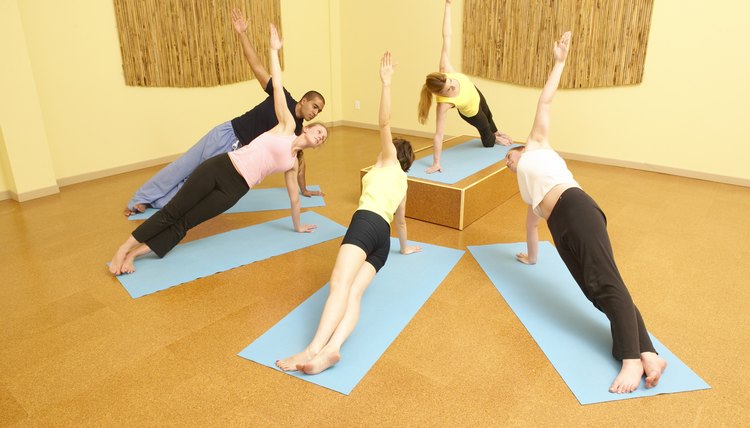The Muscles Used for Posture

Poor posture can lead to pain, decreased joint motion and muscle tightness. Proper posture starts with a good understanding of the muscles that are involved in posture. Several different muscles are responsible for maintaining upright posture, and over time, poor posture can cause these muscles to lose strength.
Spinal, Pelvic and Abdominal Muscles
The first muscles that typically come to mind with posture are the muscles along the spine. The erector spinae muscles run along the bones of your spine, the vertebrae, from your neck all the way to your tailbone. These muscles hold the spine in extension or upright, counteracting the pull of gravity. Abdominal muscles support the structures at the front of your trunk, balancing the pull of your back extensors. The quadratus luborum muscles at the top of your pelvis help stabilize the pelvis and spine in the lower back in an upright position.
Shoulder and Neck Muscles
Muscles around the shoulder blades play a big role in posture. The rhomboids, between your shoulder blades and spine, pull your shoulder blades together into retraction, keeping your shoulders back when you are in an upright position. Muscles in the back of your neck actively maintain your head in an upright position. The erector spinae muscles in the back of your neck and sternocleidomastoid muscles on either side of your neck stabilize your head and maintain proper posture.
Hip Muscles
Hip muscles also contribute to proper posture in a standing position. The gluteus medius muscle, running from the pelvis to the femur -- the thigh bone -- moves your hip into internal rotation, rotating it inward toward your body. However; in a standing position, the gluteus medius prevents your hips from swaying side to side in a standing position. The tensor fascia lata muscle, running from the pelvis to the outide of the knee, assists the gluteus medius with this action in a standing position.
Lower Leg Muscles
In standing, the lower leg muscles play a key role in maintaining upright positioning. The calf and ankle muscles -- soleus, gastrocnemius, tibilialis anterior, plantarflexors and dorsiflexors -- all contract when you are in a standing position to counteract the effects of gravity and external forces on your body.
References
Writer Bio
Aubrey Bailey has been writing health-related articles since 2009. Her articles have appeared in ADVANCE for Physical Therapy & Rehab Medicine. She holds a Bachelor of Science in physical therapy and Bachelor of Arts in psychology from the University at Buffalo, as well as a post-professional Doctor of Physical Therapy from Utica College. Dr. Bailey is also a certified hand therapist.
